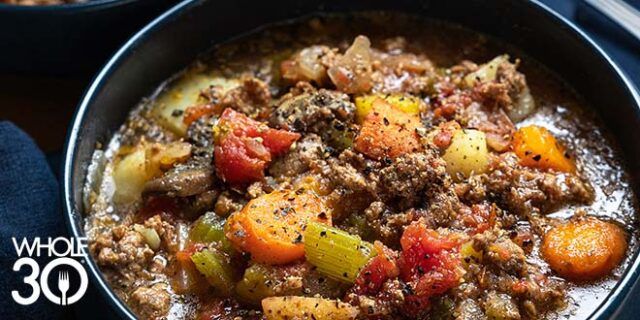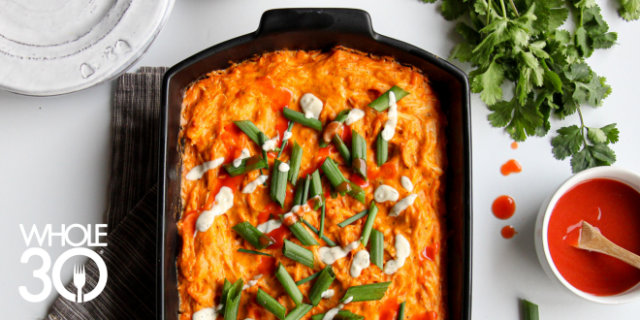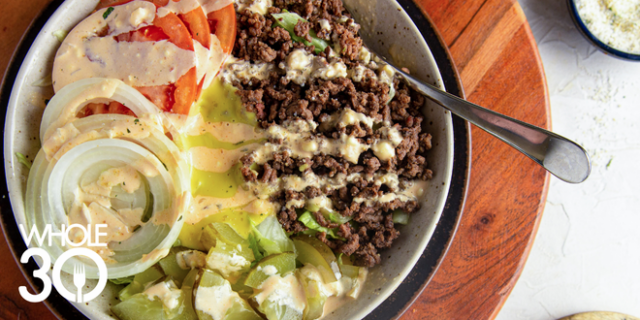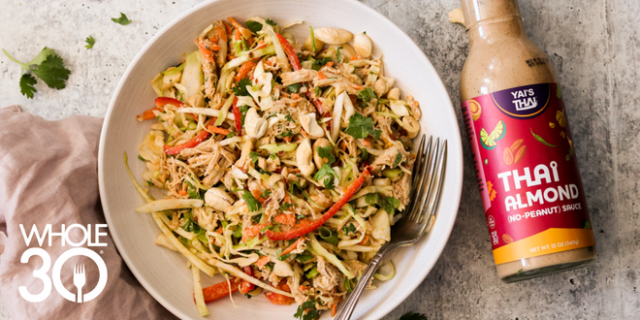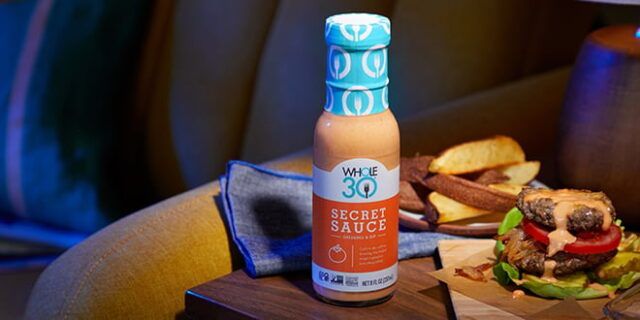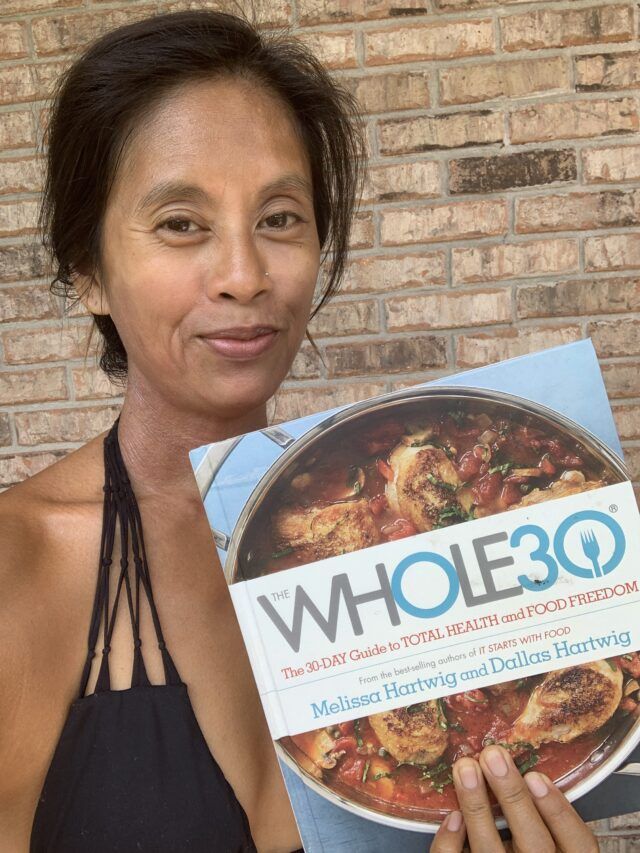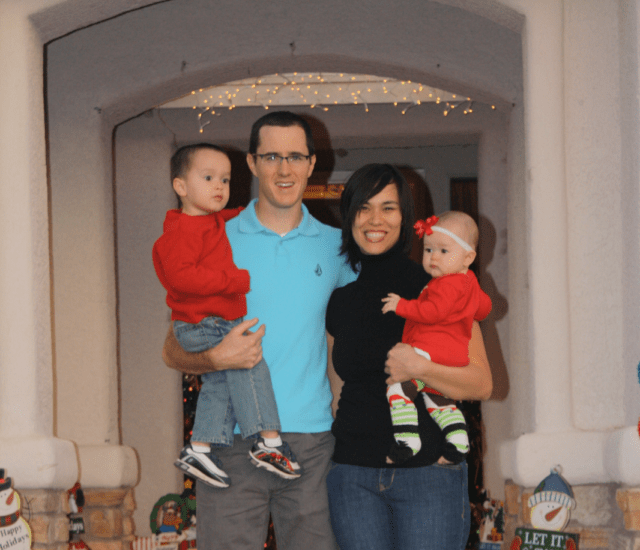
 The Original Whole30 Program Rules
The Original Whole30 Program Rules
Will it be hard? Probably. Will it be worth it? Absolutely.
In a 2023 survey of 690 Whole30 participants, 97% said they achieved most or all of their program goals.




30 days to radically transform your health, habits, and relationship with food
The Original Whole30 has two phases: 30 days of elimination and 10 (or more) days of reintroduction. During elimination, your meals will include meat, seafood, and eggs; lots of vegetables and fruit; natural, healthy fats; and fresh herbs, spices, and seasonings. You won’t have to count or restrict calories, track your food, or limit your portions. You’ll eat real, whole foods to satiety, inspired by hundreds of delicious, satisfying, and diverse recipes.
The list of foods you’ll eliminate in the first phase can seem intimidating. But you’ve got our entire community to support you; tons of free recipes, articles, and resources; eight Whole30 books to guide your journey, and testimonials from thousands of people just like you who were also intimidated—until the program started to change their life.
Read through our Whole30 Timeline and preview the journey ahead. And remember, it’s only 30 days.
Read our Whole30 TimelineThe Whole30 en Español
Review the Original Whole30 Program Rules in Spanish
Spanish Original Whole30 RulesWhole30 Elimination: 30 days
This is a list of the food and beverage groups you’ll eliminate in the first phase of the Original Whole30 program. To accurately identify any specific food sensitivities, you must commit to the complete elimination of these groups for 30 straight days.
This includes agave nectar, brown sugar, cane sugar, coconut sugar, date syrup, high-fructose corn syrup, honey, maple syrup, molasses, monk fruit extract, stevia (Truvia), saccharin (Sweet’N Low), sucralose (Splenda), aspartame (Equal, NutraSweet), erythritol, and xylitol. The only exception is 100% fruit juice (see the Fine Print).
This includes wine, champagne, beer, hard cider, hard kombucha, vodka, rum, gin, whiskey, tequila, etc., in any form (drinking, as an ingredient, or for cooking).
This includes wheat, rye, barley, triticale, oats, corn, rice, millet, bulgur, sorghum, sprouted grains, and pseudo-cereals like quinoa, amaranth, and buckwheat. This also includes all the ways wheat, corn, and rice are added to foods in the form of bran, germ, starch, and so on.
This includes beans (black, red, pinto, navy, garbanzo/chickpeas, white, kidney, lima, fava, cannellini, lentils, adzuki, mung, cranberry, and black-eyes peas); peanuts (including peanut butter); and all forms of soy (soy sauce, miso, tofu, tempeh, edamame, soy protein, soy milk, or soy lecithin). Exceptions are green beans and most peas (see the Fine Print).
This includes cow’s-, goat’s-, or sheep’s-milk products like milk, cream, cheese, cottage cheese, kefir, yogurt, sour cream, ice cream, or frozen yogurt. The only exceptions are clarified butter or ghee (see the Fine Print).
This includes baked goods made with alternative flours (bread, tortillas, wraps, crackers, pizza or pie crust, biscuits, pancakes, crepes, waffles, muffins, cupcakes, cookies, and brownies); pasta or noodles made with alternative flour; cereals made with alternative flour; chips (including potato, sweet potato, tortilla, plantain, taro, or cassava chips); French fries or tots. (See the Pancake Rule.)
No stepping on the scale, taking measurements, or analyzing body fat during the 30-day elimination phase, please. This may be the hardest rule of them all, but please trust us. Your Original Whole30 is about so much more than weight loss, and fixating on body composition means you’ll miss out on a multitude of life-changing benefits this program has to offer. Read more about our perspective on the Whole30 and weight loss.
These foods are allowed during the elimination phase:
- Fruit juice, even if used as a sweetener
- Green beans
- Most peas (sugar snap, snow, green, yellow, and split peas)
- Ghee or clarified butter
- Coconut aminos (made from fermented coconut syrup)
- Alcohol-based botanical extracts (like vanilla, lemon, or lavender)
- Certain vinegars (champagne, red wine, sherry, white wine; or rice)
- Iodized salt (which contains dextrose as a stabilizer)
Whole30 Reintroduction: 10+ days
Immediately following elimination, you’ll reintroduce these food groups one at a time, returning to the elimination phase for 2-3 days between each reintroduction group. Foods are reintroduced in order of least likely to be problematic to most likely to be problematic.
Since April 2009, millions of people have successfully completed the Whole30 program with stunning, life-changing results.

Your food freedom is right around the corner
Food freedom is the final stop on your Whole30 journey. It’s where you take the information you’ve learned from elimination and reintroduction and use it to create a joyful, sustainable diet for you, according to your definition of health.
In your food freedom, you’ll know which foods are worth it, and which foods lead to unwanted symptoms in your body. You’ll be able to make confident, informed decisions about when, how often, and how much to include these foods in your diet in a way that feels balanced and sustainable, but still keeps you feeling exactly as good as you want to feel.
Learn MoreThe opinions and/or information presented in this article is in no way intended as medical advice or as a substitute for medical treatment, and should only be used in conjunction with the guidance, care, and approval of your physician. Nothing herein is intended to diagnose, treat, cure or prevent any disease. Always consult a qualified healthcare practitioner before making any dietary or lifestyle changes.





